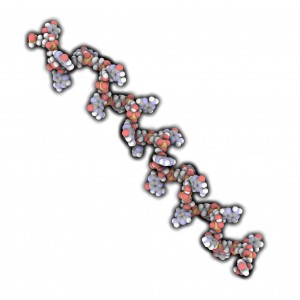Studies of the larval stages of Aedes triseriatus (Eastern TreeHole Mosquito) indicate that the “tree hole” habitats in which these larva develop contain diverse microflora including the flavobacteria Elizabethkingia and Chryseobacterium. Extracts from these bacteria have many properties that might affect mosquito health, including antibacterial and anti-fungal activities. Understanding how these bacteria affect larval mosquito development has the potential to inform strategies for mosquito control.
Some initial work has been done by expressing Bacillus larvacidal toxins in some species of Gram-negative bacteria. However, only limited success was achieved using laboratory bacterial strains for such studies. Using environmental flavobacteria might prove to be a more useful approach. However, few molecular tools exist to study environmental flavobacteria. GFP reporters have been used to look at larval feeding, but autofluorescence in the pupae limit the usefulness of GFP-labeled strains for quantitative studies. Furthermore, environmental flavobacteria have unique transcription and translation machinery, and selectable markers and expression plasmids from proteobacteria do not function in these wild strains.
Chen and colleagues set out to generate molecular tools to study Flavobacterium hibernum, a fast-growing bacterium from native mosquito habitats. Their goal was to use these tools to see if A. triseratus larvae ingest and digest these bacteria and to test whether or not F. hibernum can be used to as a vector for larvacidal toxins directed against mosquito larvae. The results of their work were published in Applied and Environmental Microbiology .
To develop a reporter that avoided issues of autofluorescence background for quantitative studies on the feeding behavior, the researchers turned to NanoLuc® Luciferase, a small, bright luciferase derived from the sea shrimp Oplopphorus gracilirostris. This luciferase has been used in mammalian cells for many kinds of studies, but it has not been used as a reporter in bacterial cells prior to the work of Chen et al. They also looked at work with laboratory flavobacteria strains that used a promoter of outer membrane protein A (PompA) to drive reporter expression as a potential system that might also work with environmental flavobacteria strains.
Continue reading “Using NanoLuc® Luciferase to Study Interactions between Environmental Flavobacteria and Mosquitos” Like this:
Like Loading...



